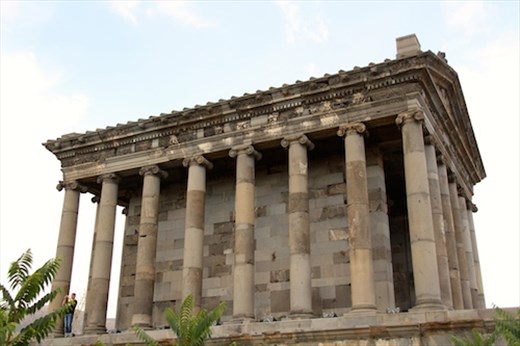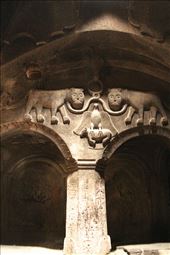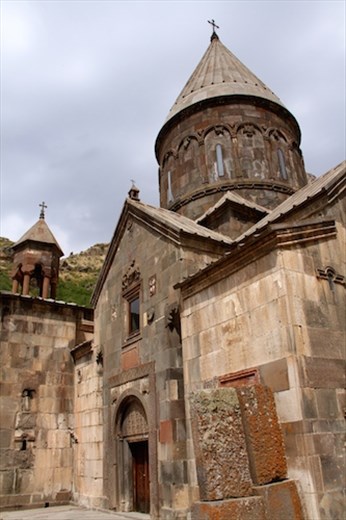BEFORE THERE WERE CHRISTIANS IN ARMENIA there were pagans. Their Hellenistic influence can be seen in the First Century AD Temple of Mihr in Garni, the only Greco-Roman colonnaded structure in the former Soviet Union. After Armenia’s conversion to Christianity it became a royal summer house for the king’s sister. The original collapsed in an earthquake in the late 17th Century and it was rebuilt in the 1970s.

Temple of Mihr, Garni
With the advent of Christianity came monks, a penitent lot with an proclivity for life in caves in remote areas. Few places could be more perfect than the towering cliffs at the head of the Azat valley, the Geghard Monastery. This part of Armenia, to my eye, is undistinguishable from eastern Turkey — dry, dusty, and brown — just right for the monastic life.


Sunday Service Singing praise
It just happened to be Sunday, we couldn’t have planned it any better. Services were being conducted in the church, a small women’s choir sang in one corner while the faithful (or hopeful) lighted candles in the gloom. Sunlight filtered through the narrow windows and the open dome, softly illuminating crosses carved into the rock as women filled plastic water bottles at a spring dripping from the wall.


Geghard Monastery
The first monastery, founded by St. Gregory the Illuminator in the 4th Century, was destroyed by Arabs in the 9th Century and was rebuilt four hundred years later. It’s claim to fame was the spear that wounded the crucified Jesus but I find it amazing that these relics can just turn up a thousand years after the fact.

Geghard Monastery
Clouds crept over the horizon, thunder rumbled and a summer shower quenched the searing heat for a bit, raising a dust smell reminiscent of childhood summers. Anyway, it was time to head back for lunch.